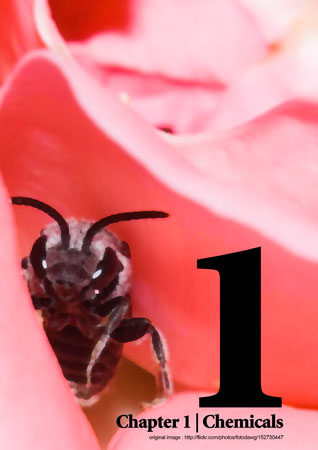The Anatomy and Physiology of Animals/Chemicals
From WikiEducator

original image by Fotodawg cc by
In this chapter you are introduced to the chemicals commonly found in cells. You will find out the difference between inorganic and organic molecules and learn about the characteristics of carbohydrates, fats and proteins.
Objectives
After completing this section, you should know the:
- symbols used to represent atoms;
- names of molecules commonly found in animal cells;
- characteristics of ions and electrolytes;
- basic structure of carbohydrates with examples;
- carbohydrates can be divided into mono- di- and poly-saccharides;
- basic structure of fats or lipids with examples;
- basic structure of proteins with examples;
- function of carbohydrates, lipids and proteins in the cell and animals' bodies;
- foods which supply carbohydrates, lipids and proteins in animal diets.
Summary
- Ions are charged particles, and electrolytes are solutions of ions in water.
- Carbohydrates are made of carbon with hydrogen and oxygen (in the same ratio as water) linked together. The cell mainly uses carbohydrates for energy.
- Fats are also made of carbon, hydrogen and oxygen. They are a powerful energy source, and are also used for insulation.
- Proteins are the building materials of the body, as well as making cell reactions happen. They contain nitrogen as well as carbon, hydrogen and oxygen.
Presentations and Blackboard quizzes can be accessed by students of Otago Polytechnic.